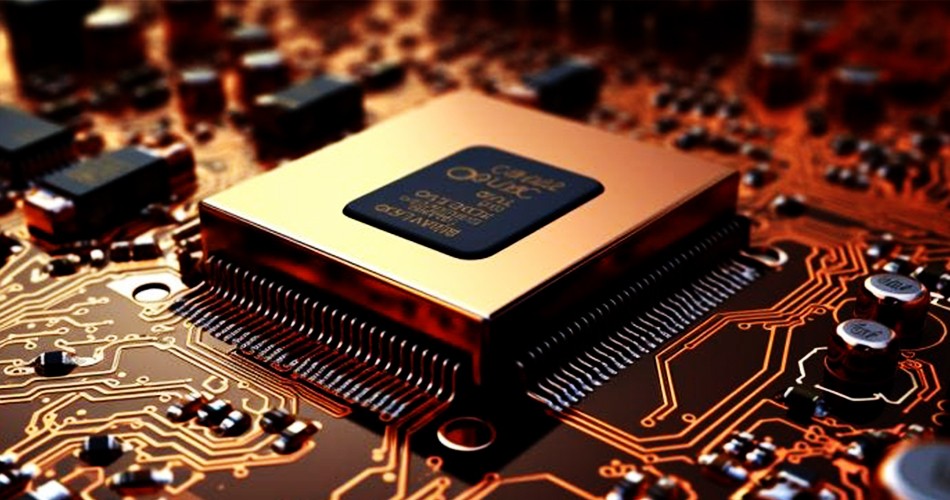- English
- Español
- Português
- русский
- Français
- 日本語
- Deutsch
- tiếng Việt
- Italiano
- Nederlands
- ภาษาไทย
- Polski
- 한국어
- Svenska
- magyar
- Malay
- বাংলা ভাষার
- Dansk
- Suomi
- हिन्दी
- Pilipino
- Türkçe
- Gaeilge
- العربية
- Indonesia
- Norsk
- تمل
- český
- ελληνικά
- український
- Javanese
- فارسی
- தமிழ்
- తెలుగు
- नेपाली
- Burmese
- български
- ລາວ
- Latine
- Қазақша
- Euskal
- Azərbaycan
- Slovenský jazyk
- Македонски
- Lietuvos
- Eesti Keel
- Română
- Slovenski
- मराठी
- Srpski језик
New Technologies in PCBA Processing
2024-10-28
In the field of electronic manufacturing, PCBA processing (Printed Circuit Board Assembly) is a vital link. With the continuous advancement of technology, new technologies are constantly being introduced into PCBA processing to improve production efficiency, product quality and flexibility. This article will explore several new technologies in PCBA processing and their applications and advantages.

1. High-density interconnect (HDI) technology
1.1 What is HDI technology
High-density interconnect (HDI) technology is a method of increasing the density of circuit boards by increasing the number of layers of circuit boards and reducing the width and spacing of traces. HDI technology allows more components and traces to be laid out in a limited space, thereby achieving higher circuit integration.
1.2 Advantages of HDI technology
The application of HDI technology in PCBA processing brings many advantages, including:
Improving the performance of circuit boards: Due to the reduction of trace length, signal transmission speed is faster and signal integrity is better.
Saving space: HDI technology allows more components to be laid out on smaller circuit boards, suitable for miniaturized and high-performance electronic products.
Enhance design flexibility: Designers can plan the layout of the circuit board more freely and improve the flexibility of design.
2. Automatic optical inspection (AOI) technology
2.1 What is AOI technology
Automatic optical inspection (AOI) is a method of using visual technology to inspect PCBA. The AOI system captures the image of the circuit board through a camera and detects whether the solder joints, component positions and polarity meet the design requirements through image processing technology.
2.2 Advantages of AOI technology
In PCBA processing, AOI technology has the following advantages:
Improve detection accuracy and speed: The AOI system can quickly and accurately detect defects on the circuit board, which is more efficient than manual inspection.
Reduce human errors: Automated inspection reduces errors caused by human operation and improves the consistency and reliability of inspection.
Real-time feedback and improvement: The AOI system can feedback the inspection results in real time, help to timely discover and solve problems in the production process, and improve product quality.
3. Three-dimensional printing (3D Printing) technology
3.1 What is 3D printing technology
Three-dimensional printing (3D Printing) technology is a method of creating three-dimensional structures by printing materials layer by layer. In PCBA processing, 3D printing technology is mainly used for rapid prototyping and small batch production.
3.2 Advantages of 3D printing technology
The application of 3D printing technology in PCBA processing brings many benefits:
Rapid prototyping: Designers can quickly prototype circuit boards, perform functional testing and design verification, and shorten the development cycle.
Small batch production: For customized and small batch production needs, 3D printing technology provides a flexible and cost-effective solution.
Innovative design: 3D printing technology allows more complex and innovative circuit board designs without the limitations of traditional manufacturing processes.
4. Machine learning and big data analysis
4.1 Application of machine learning and big data in PCBA
Machine learning and big data analysis technologies are widely used in PCBA processing. By analyzing the data in the production process, the production process can be optimized, equipment failures can be predicted, and product quality can be improved.
4.2 Advantages of machine learning and big data analysis
Production process optimization: By analyzing production data, machine learning algorithms can identify bottlenecks and optimization points in the production process and improve production efficiency.
Predictive maintenance: By analyzing the equipment operation data, equipment failures can be predicted and preventive maintenance can be performed, reducing downtime and repair costs.
Quality control: By analyzing the product inspection data, the root causes of quality problems can be discovered in a timely manner, targeted improvements can be made, and the product qualification rate can be improved.
Conclusion
With the continuous development of technology, many new technologies have been introduced into PCBA processing, such as HDI technology, AOI technology, 3D printing technology, as well as machine learning and big data analysis technology. These new technologies not only improve production efficiency and product quality, but also enhance the flexibility and innovation of design. In the future, with the further development of technology, PCBA processing will continue to usher in new opportunities and challenges, and enterprises need to continue to innovate and optimize to maintain their competitive advantage.
-
Delivery Service






-
Payment Options









